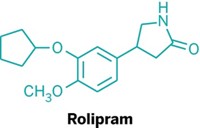Advertisement
Grab your lab coat. Let's get started
Welcome!
Welcome!
Create an account below to get 6 C&EN articles per month, receive newsletters and more - all free.
It seems this is your first time logging in online. Please enter the following information to continue.
As an ACS member you automatically get access to this site. All we need is few more details to create your reading experience.
Not you? Sign in with a different account.
Not you? Sign in with a different account.
ERROR 1
ERROR 1
ERROR 2
ERROR 2
ERROR 2
ERROR 2
ERROR 2
Password and Confirm password must match.
If you have an ACS member number, please enter it here so we can link this account to your membership. (optional)
ERROR 2
ACS values your privacy. By submitting your information, you are gaining access to C&EN and subscribing to our weekly newsletter. We use the information you provide to make your reading experience better, and we will never sell your data to third party members.
Neuroscience
Kinase inhibitor makes neurons release toxic protein aggregates
Researchers, biotech companies hope to use finding to treat ALS
by Laurel Oldach
February 8, 2023

Several neurodegenerative diseases begin when toxic protein clumps form in neurons. Scientists have yet to find a good way to clear these clumps from cells. Researchers now report that a small-molecule kinase inhibitor can reduce neurotoxicity in cell and mouse models of amyotrophic lateral sclerosis (ALS) by forcing neurons to jettison aggregated proteins (Cell 2023, DOI: 10.1016/j.cell.2023.01.005). The kinase that the molecule targets, known as PIKFYVE, is the target of drug-development efforts in at least three biotechnology companies.
ALS is a rare neurodegenerative disease that affects an estimated 32,000 people in the US according to the Centers for Disease Control. The deadly disease affects motor neurons; people with ALS lose mobility and, eventually, the ability to breathe. Those affected motor neurons often show aggregation of a protein called TDP-43. The protein plays an important role in producing and stabilizing RNA, but when it misfolds and clumps together, it can kill cells. In the same way, other proteins can aggregate and kill neurons in Parkinson’s or Alzheimer’s diseases.
To help slow down neurodegeneration, researchers have considered harnessing the neuron’s own mechanisms for protein turnover. One of those processes, called autophagy, works like digestion: the cell directs old or misfolded proteins to an organelle that is, like the stomach, full of specialized enzymes for breaking down its contents.
But Justin Ichida of the University of Southern California and colleagues found that making cells regurgitate aggregated proteins instead of digesting them can delay cell death in cell and mouse models of ALS. Blocking PIKFYVE, which is known to play a key role in transporting proteins to be degraded, appears to make the cells spit out clumped proteins at a middle step in autophagy.
Brain immune cells called microglia later pick up the aggregated proteins. “It’s hard to say actually what is happening to that material once it goes into the microglia,” Ichida says, although experiments in cultured cells suggest that microglia are able to digest the aggregates. Their fate will be of interest, says PIKFYVE researcher Lois Weisman, since some researchers have observed toxic protein aggregates spreading from one cell to another in some types of neurodegenerative disease. But according to Monica Driscoll, a cell biologist at Rutgers University who studies protein turnover in model organism brains, microglia are differently specialized than neurons and may be better able to handle large, sticky chunks of protein in a healthy brain.
Robert Scannevin, chief scientific officer at the biotech company Verge Genomics, which is developing a small-molecule PIKFYVE inhibitor to treat ALS, says that he’s not concerned about such spreading, because the researchers observed no increase in inflammation or activated microglia. He also finds it encouraging that Ichida’s team saw similar results in several different genetic models for ALS, which suggests that PIKFYVE inhibition might help in both sporadic and familial forms of the disease.
Besides Verge, at least two other companies are pursuing this approach to treat ALS. Ichida’s lab collaborates with Acurastem, a company he founded, which hopes to take an antisense oligonucleotide against PIKFYVE to the clinic soon. AI Therapeutics, which declined to comment on the new study, is testing a formulation of apilimod in a phase 2 trial of patients with ALS.




Join the conversation
Contact the reporter
Submit a Letter to the Editor for publication
Engage with us on Twitter